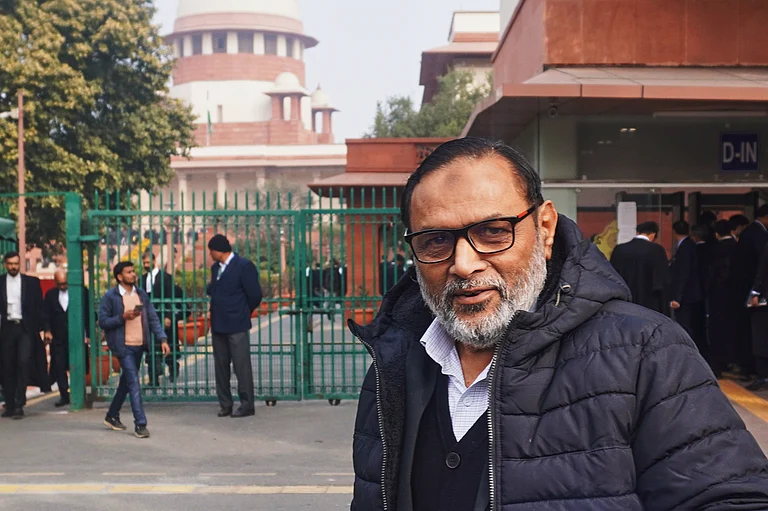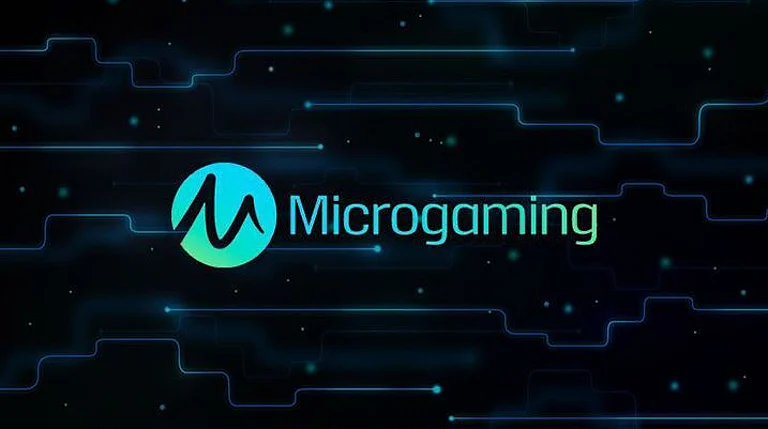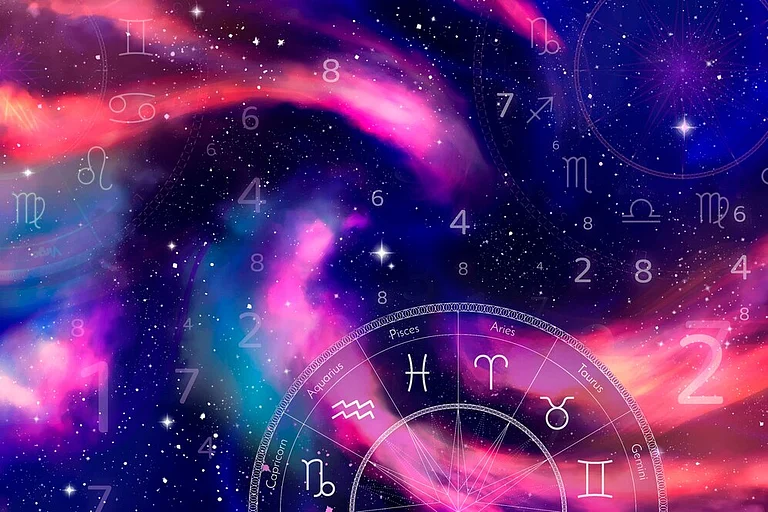Later if not sooner.
An elite Outlook jury of five well-known scientists and two science writers believes it’s a toss-up between Vilayanur S. Ramachandran, C.N.R. Rao, Shrinivas R. Kulkarni and Ashoke Sen respectively, to bring home the next science Nobel.
- Vilayanur S. Ramachandran, 51, director, Center for Brain and Cognition at the University of California in San Diego, discovered the now well-known phantom limb syndrome. Named by Newsweek as one of the hundred most prominent people to watch for in the present century, he has explored a diverse set of phenomena, the neurological basis of visual illusions and the perception of art.
‘Rama’, as Ramachandran is better known, has answered questions no scientist would seriously address. Why do we laugh? Why do we become depressed? How do we make decisions, deceive ourselves and dream? Why do we believe in God? Why are we inclined towards the arts and poetry? But his work on the phantom limb or the pain in an arm or leg that’s been amputated is of seminal importance. People who complained of pain in a severed limb used to be called ‘crazy’ and were sent off to psychiatrists but Rama revealed that we’re all born with a map in the brain to which the sensory surfaces of our bodies are connected.
- C.N.R. Rao, 69, former director of the Indian Institute of Science (IISC), Bangalore, is the honorary president and Linus Pauling research professor at the Jawaharlal Nehru Centre for Advanced Scientific Research (JNCASR) in the same city. He has been at the frontiers of superconductivity, buckyballs and nanoparticles and is rumoured to have been "nominated" for the chemistry Nobel for the past five years or so.It was on the recommendation of an advisory council headed by Rao that the Indian government chose to build its own supercomputer.
- Shrinivas R. Kulkarni, 47—brother-in-law of Infosys chief N.R. Narayana Murthy—is the SRK of astrophysics. The John D. and Catherine T. McArthur professor of astronomy and planetary science at Caltech discovered the millisecond pulsar—distant stars emitting very high-frequency radio waves—and has conducted stand-out observational astronomy in virtually the entire electromagnetic spectrum.
‘Shrini’ also discovered brown dwarfs—stars whose radii are less than the Chandrashekhar Limit (the theory that won Subrahmanyam Chandrashekhar the Nobel) and which decay into less luminous (brown), smaller gas masses instead of collapsing into black holes. Shrini’s primary interests are the study of neutron stars and gamma-ray bursts, and the search for extra-solar planets through interferometric and adaptive techniques.
- Ashoke Sen, 47, is with the Harish Chandra Research Institute (formerly Mehta Research Institute of Mathematics and Mathematical Physics) in Allahabad. His contributions to string theory of elementary particles has, in recent times, tended to set the agenda for other researchers and his name is taken in the same breath as Schwarz’s, Witten’s and other pioneers of the field. Sen is currently working on the study of dynamics of tachyons on unstable D-branes in string theory and his findings may have interesting applications in cosmology.
Only three Indian scientists and scientists of Indian origin (SIOs)—Sir C.V. Raman, Hargobind Khorana and Subrahmanyam Chandrashekhar—have so far bagged the coveted citation in its 102-year history, Chandrashekhar being the last in 1983.
Eighteen other Indian scientists and sios have been nominated by the Outlook jury as possible contenders, but Ramachandran and Rao top the list with five votes each, followed by ‘Shrini’ and Sen with three each. And, it is a measure of the kind of work being done by the Fab Four that while their names figure in the lists of different members of the jury, none of the other 18 probables bagged more than a single vote each from the seven-man jury.
The Outlook jury comprised a cellular and molecular biologist (P.M. Bhargava), an astrophysicist (Ramanath Cowsik), a space scientist (K. Kasturirangan), a chemical engineer (R.A. Mashelkar) and a physicist who also served as Union science minister (M.G.K. Menon). The two science writers were Vithal C. Nadkarni of The Times of India and R. Ramachandran of Frontline.
The jury members were given a carte blanche to name Indian scientists (or SIOs) who were best poised to reap the Nobel harvest on their research.
They were allowed to nominate as many candidates as they wished, and none of them knew whom the other jury members had picked. They came up with 20 names, all right, but just don’t ask them when an Indian scientist or sio will catch the attention of the Royal Swedish Academy of Sciences (which hands out the physics and chemistry prizes) or that of the Karolinska Institute (physiology and medicine). It could be this year, it could be next year, or it could be some time in the next decade. But the mood is upbeat.
As Cowsik, director of the Indian Institute of Astrophysics (IIA), puts it, "Indeed, this is the very essence of science that such a thing is not predictable but I have every confidence that within about 10 years there would be at least one Nobel Prize in the field of fundamental science in India."
Whether the Indian scientific community should be perturbed over a quirky prize that eluded John von Neumann, and has so far ignored the likes of Stephen Hawking and Roger Penrose, is open to question. But there have been at least two, if not three, occasions when a science Nobel has missed Indian scientists and sios by a whisker.
- M.G.K. Menon’s group (see box) would probably have been in line for the physics prize, that went to the Japanese last year, if their neutrino project in the Kolar gold fields hadn’t been cruelly abandoned.
- C.K.N. Patel, better known as Kumar Patel, who discovered the carbon dioxide laser in 1963 at 25, and later made pioneering contributions to dye and tunable lasers, was somehow not nominated by Bell Labs.
- And G.N. Ramachandran, who evolved a method for understanding protein structures and who, it is believed, might have even cracked the DNA’s double helical structure before Crick and Watson did 50 years ago.
This is in marked contrast to the general body of work of Shrini Kulkarni or structural biologist Venkataraman ‘Venki’ Ramakrishnan who is attached to the structural studies division of the MRC laboratory of molecular biology at Cambridge, UK. Shrini’s discovery of the millisecond pulsar on top of his emphasis on instrumentation and novel techniques of observation are seen to have opened a whole new discipline in pulsar physics. Likewise, Venki’s pathbreaking work in the ribosome structural analysis could lead to a new area in biology in the post-genomic era.
A bigger problem area vis-a-vis the science Nobels is the fluid nature of some of the fields in which Indians are doing exceptional work. In the Nobel stakes, every theory must have experimental proof, so speculative theories are more or less out. It is here that most Indian scientists and sios may find themselves on the backfoot.
Take, for instance, K.R. Srinivasan, currently director of the Abdus Salam International Centre for Theoretical Physics and Third World Academy of Sciences (ASICTP), Trieste, Italy. Srinivasan has been working in the complex area of turbulence to peer and critical acclaim. Yet, the very nature of the beast is such that we are nowhere near understanding it and there are other people who have been at it for years. Will research work of this nature go in favour of the candidate or against in the Nobel panel’s eyes?
Ditto Abhay Ashtekar who is working on revamping Einsteinian relativity in an attempt to marry it with quantum theory. And Ashoke Sen’s contributions to string theory of elementary particles. The work, everybody agrees, is cutting edge. But are they yet at a stage where they can provide a solution to the problem? It is probably this, the unpredictable nature of where the scientists are and what is to come, that prevents such honchos as Roddam Narasimha of the National Institute of Advanced Studies (NIAS), Bangalore, or Govind Swarup of the Giant Metrewave Radio Telescope, Pune, or Sankaran Valiathan of the Indian National Science Academy (INSA) from joining the name game.
Admittedly, the probability of an Indian getting a science Nobel is extremely low when the score reads 3 out of 486. Contrast this with American scientists, who have bagged 206 out of the 486 prizes that have been handed out in physics, chemistry and medicine since 1901, or the 72 that the Brits have walked away with, and the mountain that stares at Indian scientists and sios becomes clear.
Still, hope springs eternal in the heart of the humble Indian scientist and science fan. After all, as many Indians (3) have bagged a Nobel in science as in peace, economics and literature together. And even though purists will sneer at the thought of benefiting from the largesse of the man whose singular contribution was dynamite, there’s no dearth of aspirants and ‘perspirants’ angling for ‘The Prize’.
There are certainly some who are perspiring to bag the Nobel. For instance, Outlook invited a well-known, Chennai-based "researcher" to be on the jury. Aghast that we were not even considering him among the probables, he had one of his cronies volunteer and nominate him as a candidate.
And, although the Nobel Foundation statutes clearly stipulate that information about the nominations is not to be disclosed publicly or privately for a period of 50 years, some Indians have been going out of their own to keep their names in circulation a la Gopal Singh (WHO’s THAT?) and Kamala Das. A couple of years ago, one well-known Bangalore "don", who lobbies heavily through his Russian friends and routinely floats his name, stood up at a public forum and announced that he had "narrowly missed" the Nobel Prize. Someone from the audience piped in: "That’s the easiest thing to do."
Although his own shortlist comprises E. Premkumar Reddy, who is among the 100 most highly cited scientists in the world, and the ‘DNA Dada’ Lalji Singh, P.M. Bhargava observes: "It is a pity that though we have had an excellent tradition of chemistry in the country, there does not appear to be any Nobel-class person in this area in the country."
This isn’t to say that the only thing on the Indian scientist’s mind is the Nobel. Says K. Vijay Raghavan, director, National Centre for Biological Sciences at the Tata Institute for Fundamental Research (TIFR), Bangalore: "The quest for a Nobel is hardly what drives scientists, with a few megalomaniacal exceptions, of course."
And, truth to tell, there are plenty of scientists who are not losing sleep over the Nobel. Who are instead slaving away silently, preferring to let their work do all the talking. One scientist, on being told that he had been nominated by our jury, has been badgering Outlook to take him off our shortlist saying that he did not consider himself Nobel material at all.
Still, anybody whose head cannot start tingling at the thought of global recognition, the planet’s most famous title ("Nobel laureate") and the comforting feeling of one crore krona (approximately Rs 6 crore) being transferred to his or her bank account must be a sage.
As Chandrashekhar said at the ’83 Nobel banquet: "The award of a Nobel Prize carries with it so much distinction and the number of competing areas and discoveries are so many, that it must of necessity have a sobering effect on an individual who receives the prize. For who’ll not be sobered by the realisation that among the past laureates there are some who’ve achieved a measure of insight into nature that’s far beyond the attainment of most?"
Whether V. Ramachandran, C.N.R. Rao, Shrini Kulkarni or Ashoke Sen—or any of the other 18 on our list—will make it one day, some day, will be known only when the pithy press releases, datelined Stockholm, start arriving in October. Nevertheless, the question why India hasn’t been able to add more names to the scroll of honour since ’83 must rankle not just those who added ‘Jai Vigyan’ to ‘Jai Jawan’ and ‘Jai Kisan’, but the scientific community that prides itself on its strides in the nuclear, space and defence spheres.
On paper, of course, India has a lot going in its favour. It has an obscene number of working and aspiring scientists and technologists. It has a nationwide network of R&D labs and universities. Plus, it has a long scientific tradition dating back many centuries in indigenous science and well over a century of western-oriented science and higher education.
The Nobel Prize is certainly not the perfect mirror of the state of our science but when the score reads 3/486, and when three of our top nominees are currently doing their work abroad, it is useful to pause and ponder: why?
- Is it because our schools and colleges and universities reward and recognise mindless cramming and mugging up rather than real enterprise and innovation?lIs it because our scientific establishment has become a safety-first, no-risk, pressure-free, middle-class source of livelihood that looks down upon those who plough a lonely furrow?
- Is it because the state-funded scientific establishment (0.71 per cent of the GDP) rides piggyback on the nation’s space, defence and nuclear interests, where the yes-men thrive?
- Is it because the drain of good brains first and the software boom later ensures, as Govind Swarup puts it, that "only the distilled residue comes to science"?
Numbers don’t lie and in the case of Indian science they tell the full, grim truth about the kind of people its schools, colleges and labs and institutes are churning out. Since 1841, we have produced only 40-odd Fellows of the Royal Societies (FRS). In contrast, Australia has produced almost twice as many. There are only five Indians (foreign members) in the National Academy of Sciences in the US (three others have passed away), and only two in the US Academy of Engineering. And Chinese and Korean researchers have forged ahead in the number of papers published in Nature and Science.
While the country may proudly pin its Nobel hopes on a V. Ramachandran or a Shrini Kulkarni who are working under near-perfect conditions, a number of scientists agree that India lacks a substantial pool of bleeding-edge researchers or the necessary infrastructure to nurture ambitions of a regular homegrown Nobel prospect.
Says Gautam R. Desiraju of the school of chemistry, University of Hyderabad: "The Nobel Prize is at the top of a very large scientific pyramid. You get Nobels in plenty in countries where the pyramid is tall and strong. But Indian science is creaking and the ills of the award/reward system have now become endemic."
- When foreign scientists have to write to the President to complain about plagiarism by the V-C of a university.
- When a well-known scientist-director routinely adds his name as co-author to research papers to which his contribution is known be nil without being brought to book.
- When a researcher stands up at an international conference and confesses to the irreproducibility of data in a paper presented by him, we’re looking at a wider, deeper malaise that a Nobel will not set right.
In the end, the Nobel is just a nice little pot at the end of the research rainbow. No one can consciously work towards it (although some might—and do—try). But is research in India attractive enough as a career to create that much-wanted base? Are those who are getting in motivated enough to raise the bar a few notches? And are we as a people capable of thinking and doing anything that somebody else already has not?
Pritam Sengupta B.R. Srikanth with Manu Joseph in Mumbai, Chinmayee Manjunathand Debarshi Dasgupta in Bangalore

























